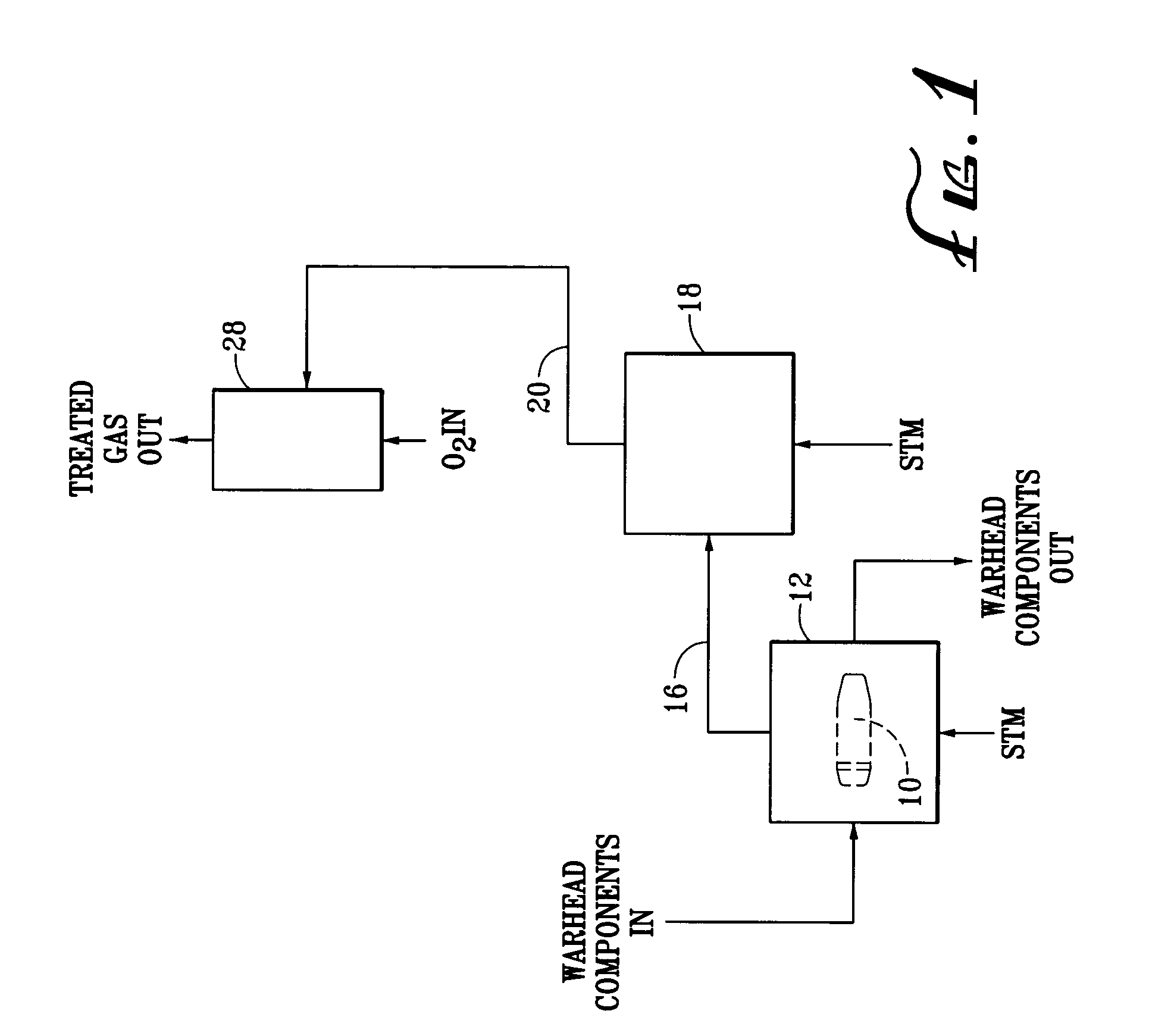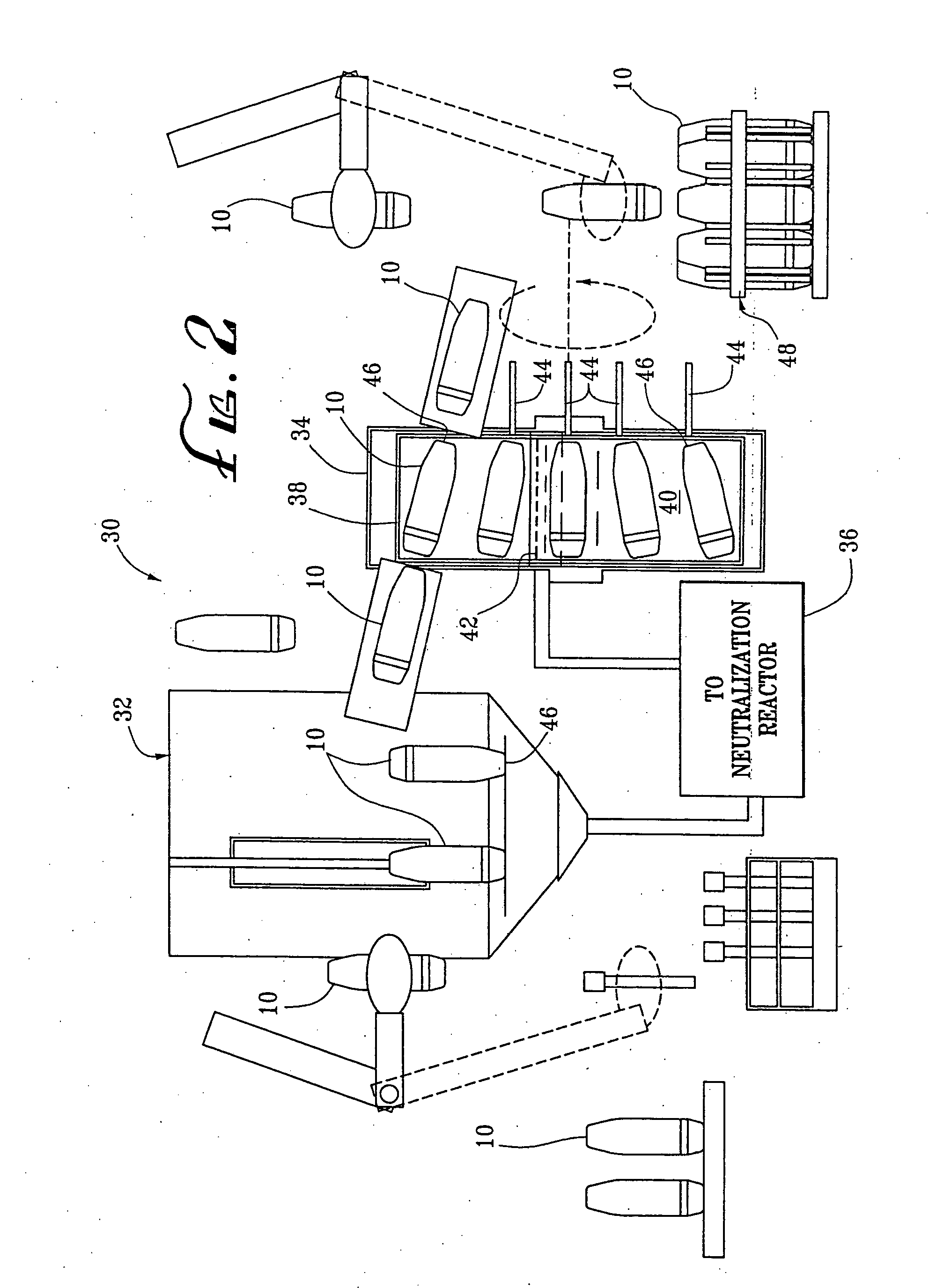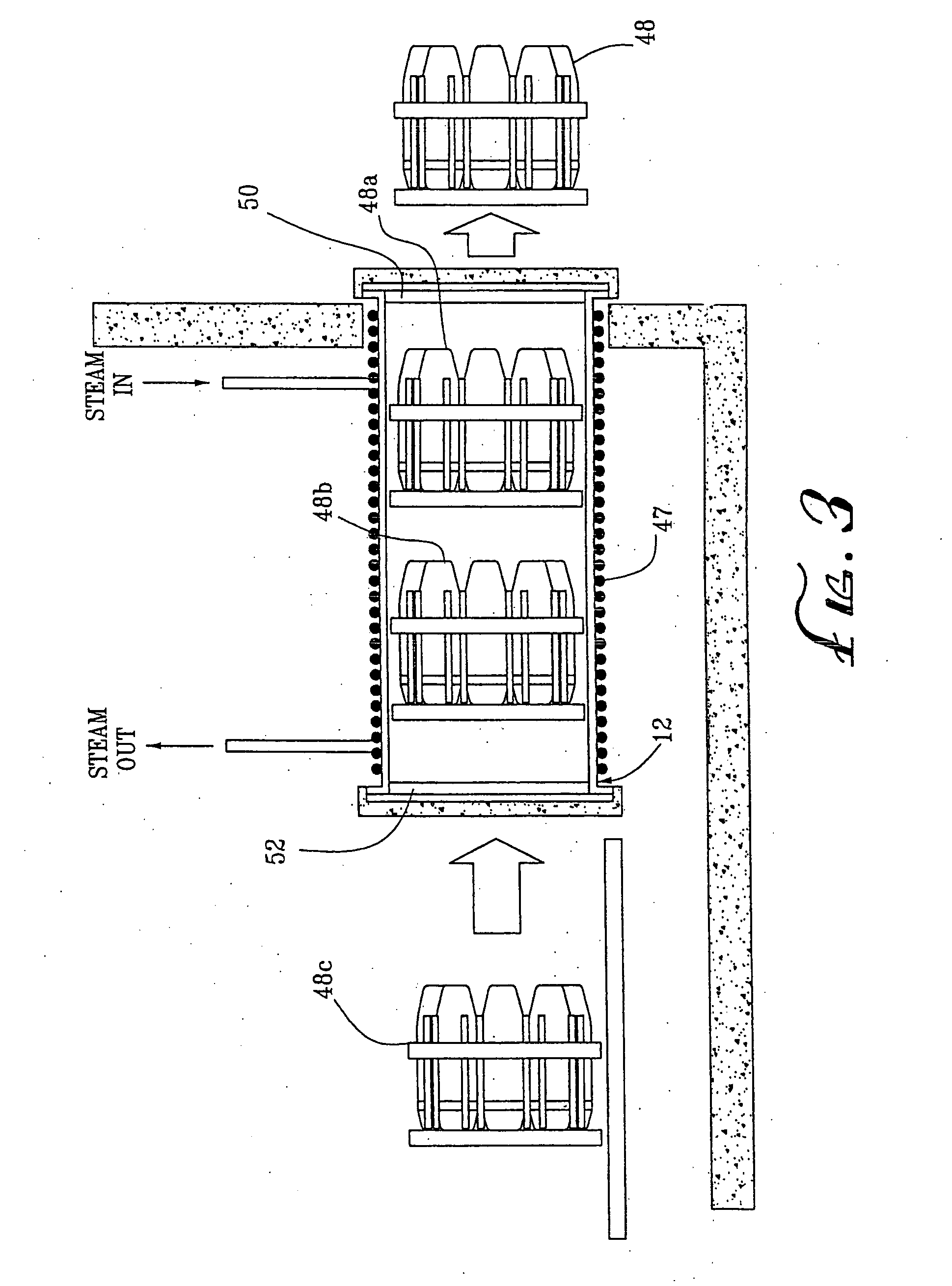Process for non-incineration decontamination of hazardous agents
a technology of hazardous agents and non-incineration, applied in the direction of chemical protection, etc., can solve the problems of contaminated housings and their various components, difficult decontamination of contaminated materials, and large residual amount of toxic chemical warfare agents, etc., to achieve the effect of satisfying this need
- Summary
- Abstract
- Description
- Claims
- Application Information
AI Technical Summary
Benefits of technology
Problems solved by technology
Method used
Image
Examples
Embodiment Construction
[0016] The following discussion describes in detail one embodiment of the invention and several variations of that embodiment. This discussion should not be construed, however, as limiting the invention to those particular embodiments. Practitioners skilled in the art will recognize numerous other embodiments as well.
[0017] The invention is a process for the low temperature, non-incineration decontamination of contaminated materials containing hazardous agents. By “hazardous agents,” it is meant any chemical compound or material which is considered harmful to humans and / or other life forms. Hazardous agents are typically organic in nature, but can also be toxic metals or metal compounds which are volatilized at temperatures between 560° C. and 750° C. Such metals include mercury and lead.
[0018] The invention is especially applicable to the decontamination of chemical weapon components, wherein the hazardous agents are chemical warfare agents. By the term “chemical warfare agents,”...
PUM
 Login to View More
Login to View More Abstract
Description
Claims
Application Information
 Login to View More
Login to View More - R&D
- Intellectual Property
- Life Sciences
- Materials
- Tech Scout
- Unparalleled Data Quality
- Higher Quality Content
- 60% Fewer Hallucinations
Browse by: Latest US Patents, China's latest patents, Technical Efficacy Thesaurus, Application Domain, Technology Topic, Popular Technical Reports.
© 2025 PatSnap. All rights reserved.Legal|Privacy policy|Modern Slavery Act Transparency Statement|Sitemap|About US| Contact US: help@patsnap.com



